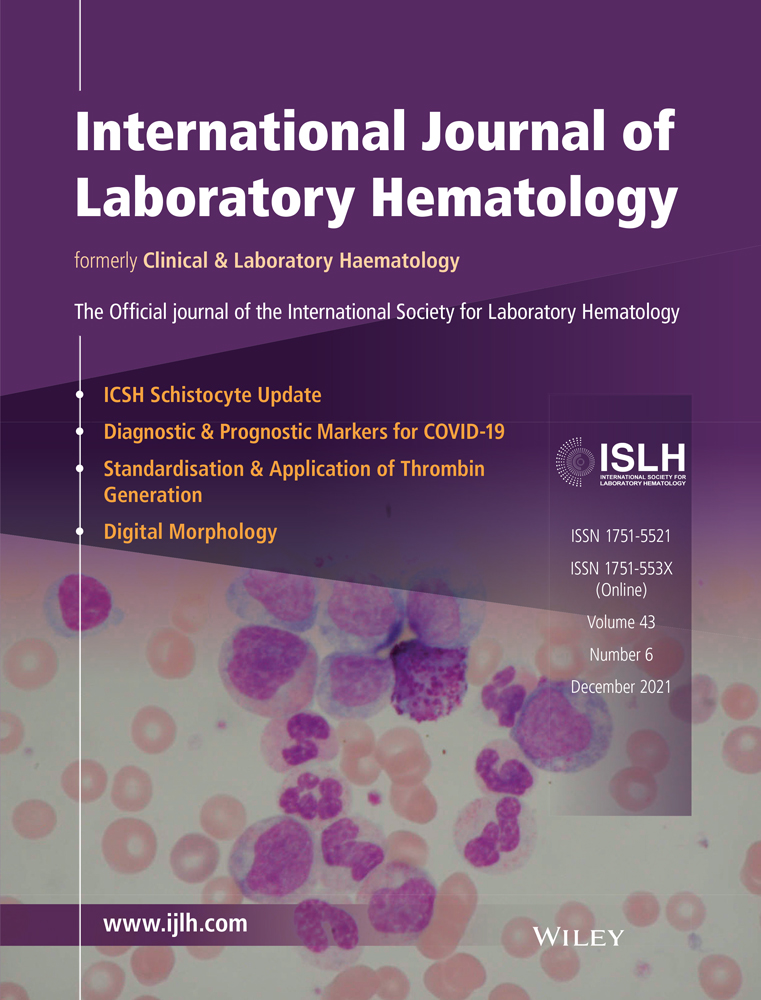Clinicopathological and immunophenotypic features of early T cell precursor acute lymphoblastic leukaemia: A flow cytometry score for the initial diagnosis
Abstract
Objective
To assess the prevalence of early T precursor-acute lymphoblastic leukaemia (ETP-ALL), study its clinicopathological features and devise a ‘flow score’ based on immunophenotypic profiles.
Material Methods
This was a retrospective study where clinical and laboratory data of all consecutive T-ALL cases were analysed to identify features differentiating ETP from non-ETP-ALL. The utility of a flow score based on the five commonly used markers in leukaemia panels for T-ALL (CD34, CD8, CD5, CD13 and CD33) was evaluated to differentiate ETP from non-ETP-ALL.
Results
Early T precursor-acute lymphoblastic leukaemia constituted 24.2% (n = 29) of all T-ALL cases. It was significantly more common in adults (30.2%) as compared to paediatric (17.5%) patients (P = .046). The median age of presentation was significantly higher than the non-ETP group. (24 vs 19 years; P = .01). Patients with ETP-ALL usually presented with organomegaly, lymphadenopathy, lower levels of haemoglobin, total leucocyte count, peripheral blood blast proportion and LDH levels as compared to non-ETP-ALL. The majority of ETP-ALL cases had L2 morphology with a moderate amount of cytoplasm showing frequent blebbing. A flow score cut-off value of ≥3 on ROC curve analysis had a sensitivity and specificity of 100% and 94.6% respectively.
Conclusion
Early T precursor-acute lymphoblastic leukaemia had unique clinical and laboratory features. The prevalence of this entity is more common in the adult population. A flow score based on a minimum of five widely used markers can confidently identify ETP-ALL and should be included in the primary panel of markers used for flow cytometric analysis.
CONFLICT OF INTEREST
The authors declare that they do not have any conflict of interest.
Open Research
DATA AVAILABILITY STATEMENT
Data available on request due to privacy/ethical restrictions.




